What a beautiful week! I've never seen so many colorful flowers blooming, not just in my yard but all over town. All the dogwoods, which had a miserable showing last year, seem to have extra buds. The redbuds and ornamental crabs are all just blooming their hearts out. Here are some of my primroses and golden wood poppies. If you would like to drive by and dig up some of those poppies, my yard would be better for it. Come on by!


The ants are more and more and busier and busier. Here are two dragging some food home, but here is one that seems to have been trussed up by a spider.
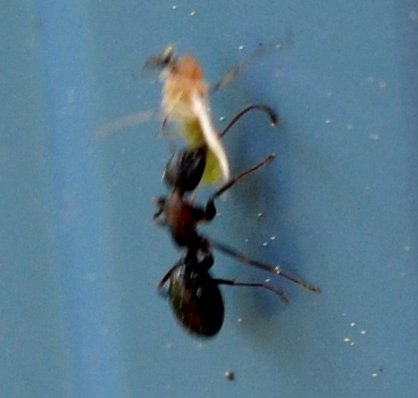
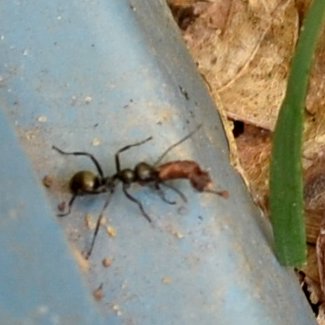
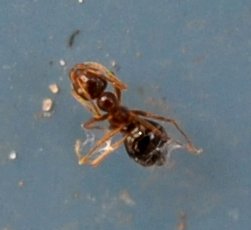
Remember that there is information in the name of the file for each image. You can see it by mousing over the image - look at the lower left of the screen. Or you can click on the image to get to the (usually) larger image. Then the info is displayed in the address line above.
The bees are still fairly busy - here is one in the golden wood poppies. The great big carpenter bees (look like a great big bumblebee with an all-black rear end) are so fast I've had a hard time getting one to stand still for its portrait, but here is some information on them. They tend to buzz very loudly but they really just want to make sure you see them coming. In particular, "In several species, the females live alongside their own daughters or sisters, creating a small social group. They use wood bits to form partitions between the cells in the nest. A few species bore holes in wood dwellings. Since the tunnels are near the surface, structural damage is generally minor or super.ficial." I hope this will relax the people who are terrified that they will eat their houses.
Since there aren't many bee pictures this week(the exception this one on the golden wood poppy), we press forward alphabetically to "beetles". I spent a lot of time trying to identify this next one. Finally got up the nerve to throw myself on the mercy of Bugguide and quickly got an ID along with a "(my closest semi-ID)looks nothing like this." But then I looked this beetle up in the data map and it hadn't been reported from Michigan so I couldn't not point that out and hope they record it. :-)
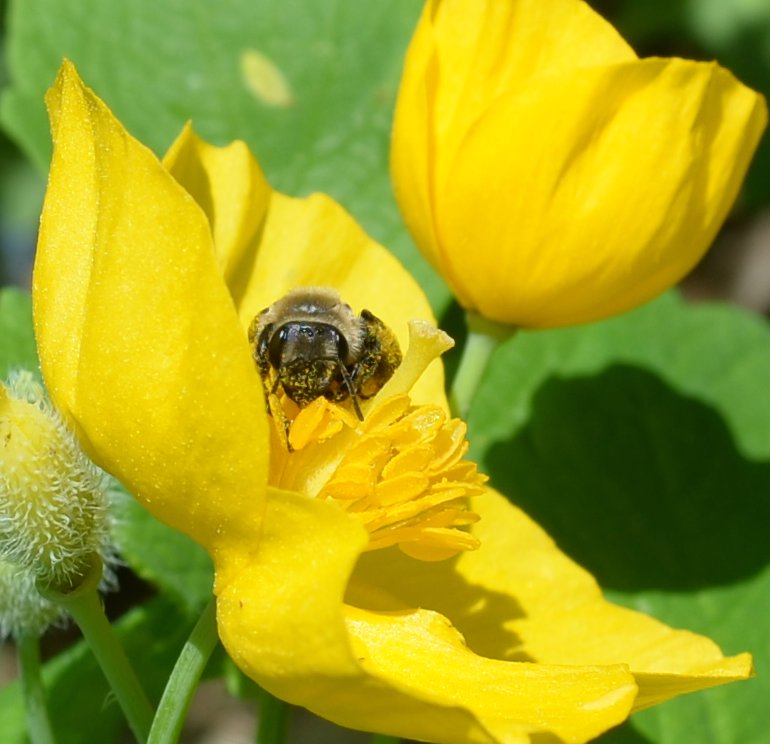
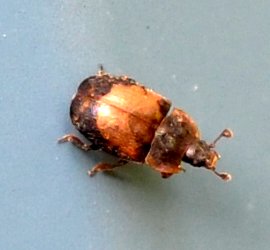
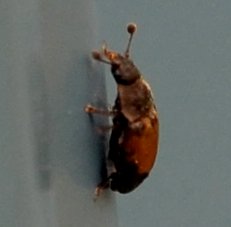
This is a little Checkered Beetle from my neighbors' garage. Then a beautiful little lily-leaf beetle, which can quickly denude your nice lily plants. And a mystery little black beetle or bug.
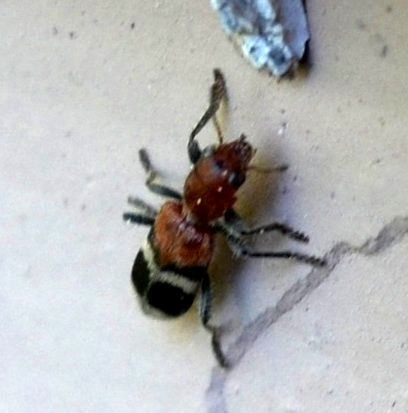
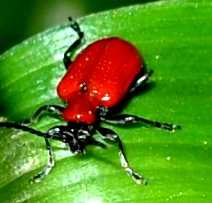
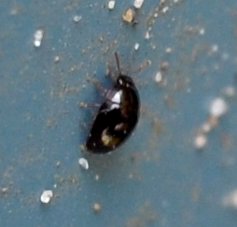
Here are a few more mystery beetles. The third one I mis-identified last year as a raspberry fruitworm beetle, but I am changing my mind.
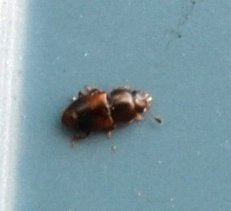
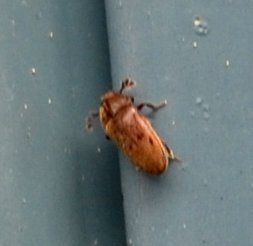

Another set of nameless small beetles, but they seem to be a) a rove beetle; b) a scarab; and c) an imitation of a turpentine beetle, but not a TB because the shape and surface finish aren't the same(the turpentine beetle is generally a shinier texture).
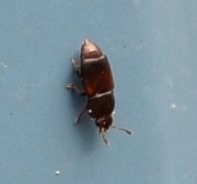
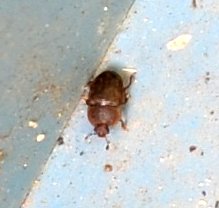
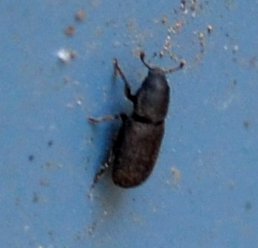
And what day would be complete without a few weevils?
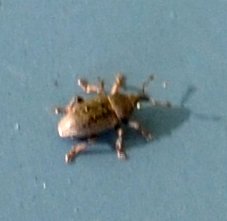

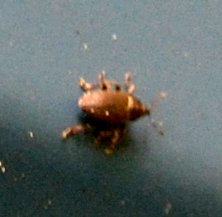
Herein lies a puzzle. This first one we now know is a white-margined burrower. The next one looks just like it (to me), except that perhaps it ran into a pollen truck. Third, why are they following each other in lock-step like this?
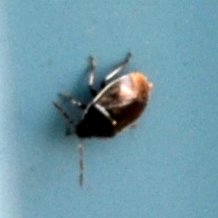
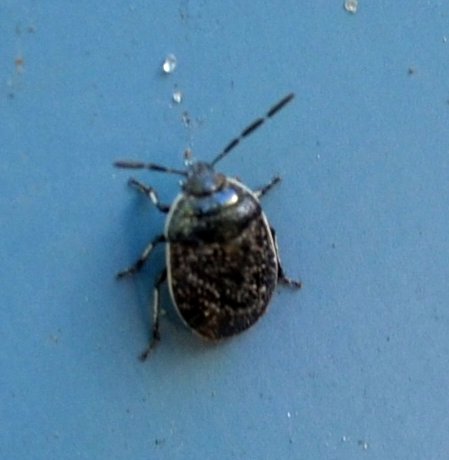
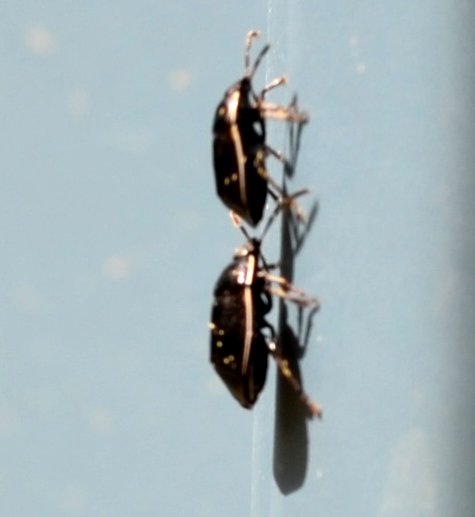
Well, that was quick. No more bugs this week! But we have seen a good deal of action in the pond. Here's one you can have some fun with. If you click on this picture to get the bigger picture, and then click again on a region you are interested in, you can zoom in on that region to see some of the cuter little baby fishes. The middle picture shows a view of the pond bottom, showing a few little pencil-lead shaped things that I'm hoping are baby tadpoles. The third view is a closer-up picture.
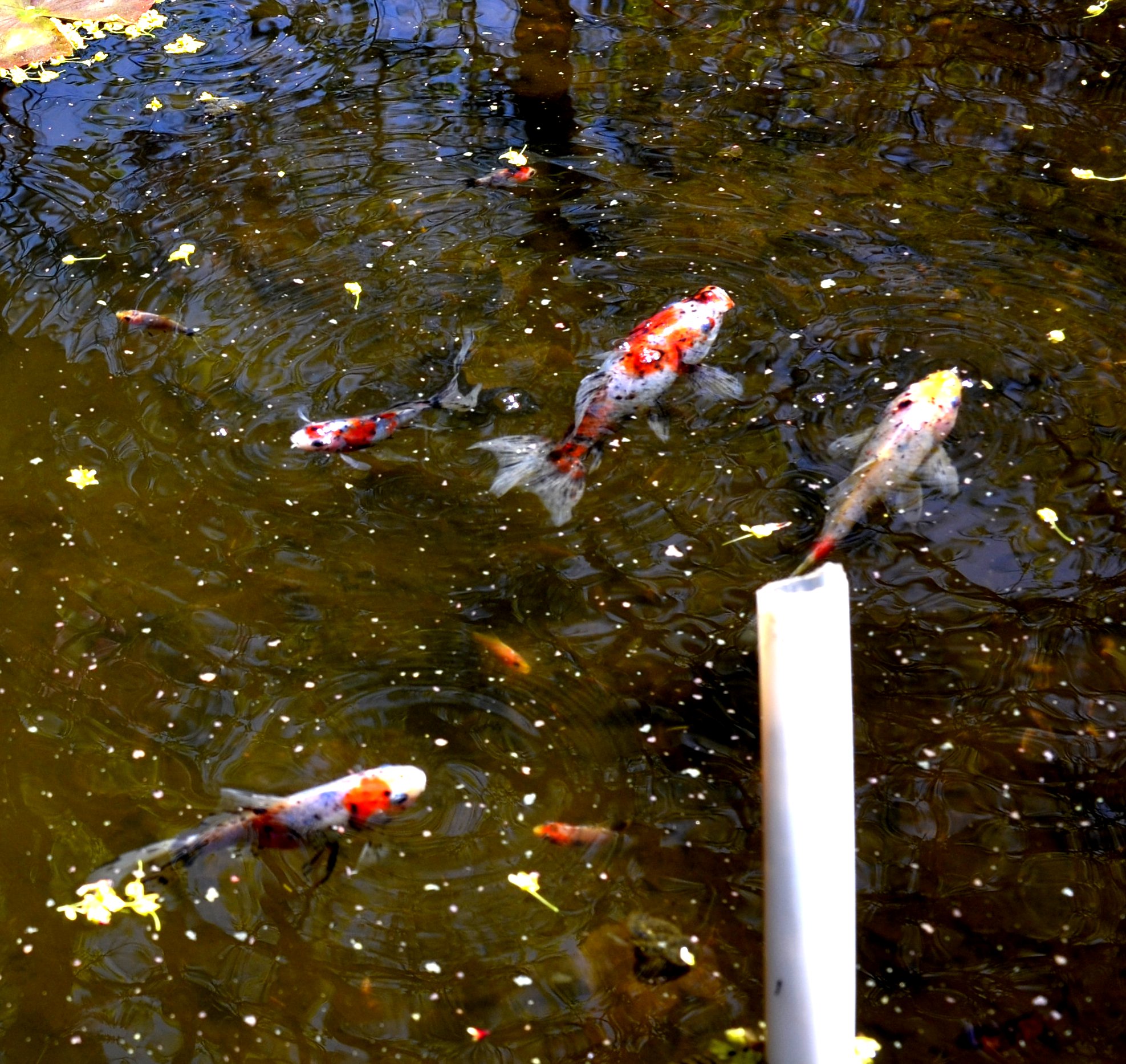
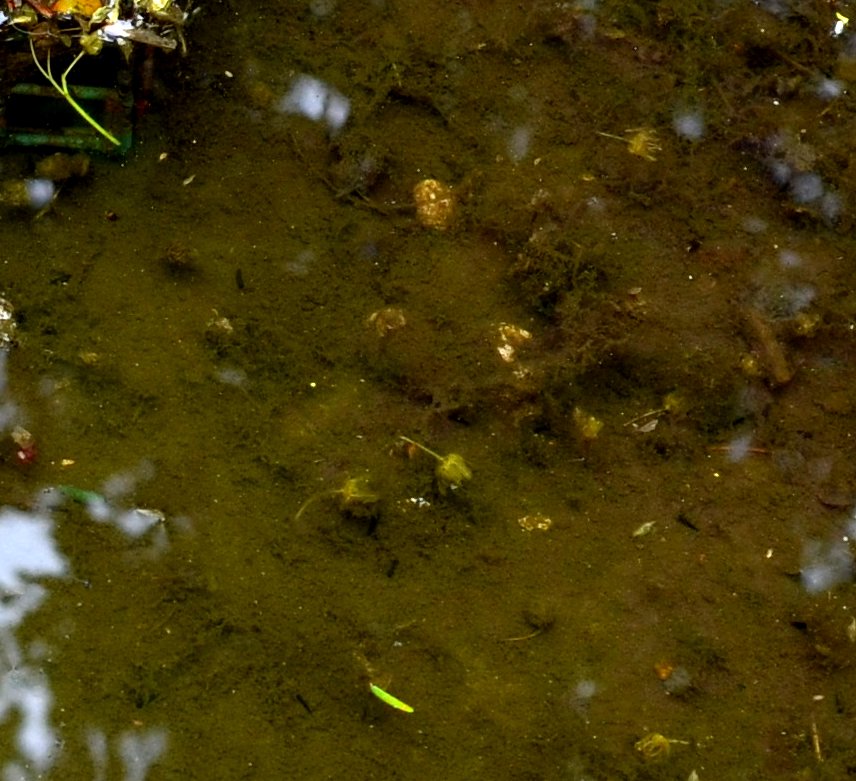
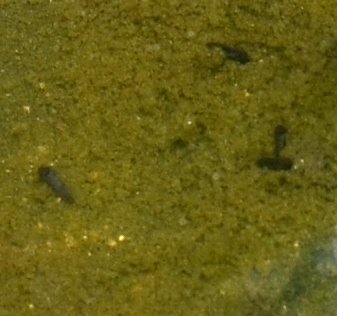
In case you wanted to see some of the variety of patterns the baby fish come in, here's a collection edited out of a bigger picture. Are they cute or what?

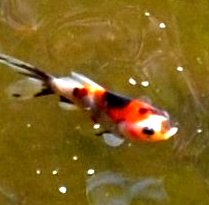

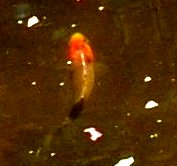
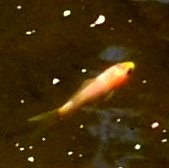
Let's start the flies with the cranes. Pretty soon they'll be mating but in the meantime, how to tell the boys from the girls. The girls have pointy abdomens, the boys open ones (seen from the top, they are flat at the tip). Your kids should get a giggle out of that. Of course, most of them close their wings to fool you. All of these are giant cranes with a wingspan of 2-3 inches.

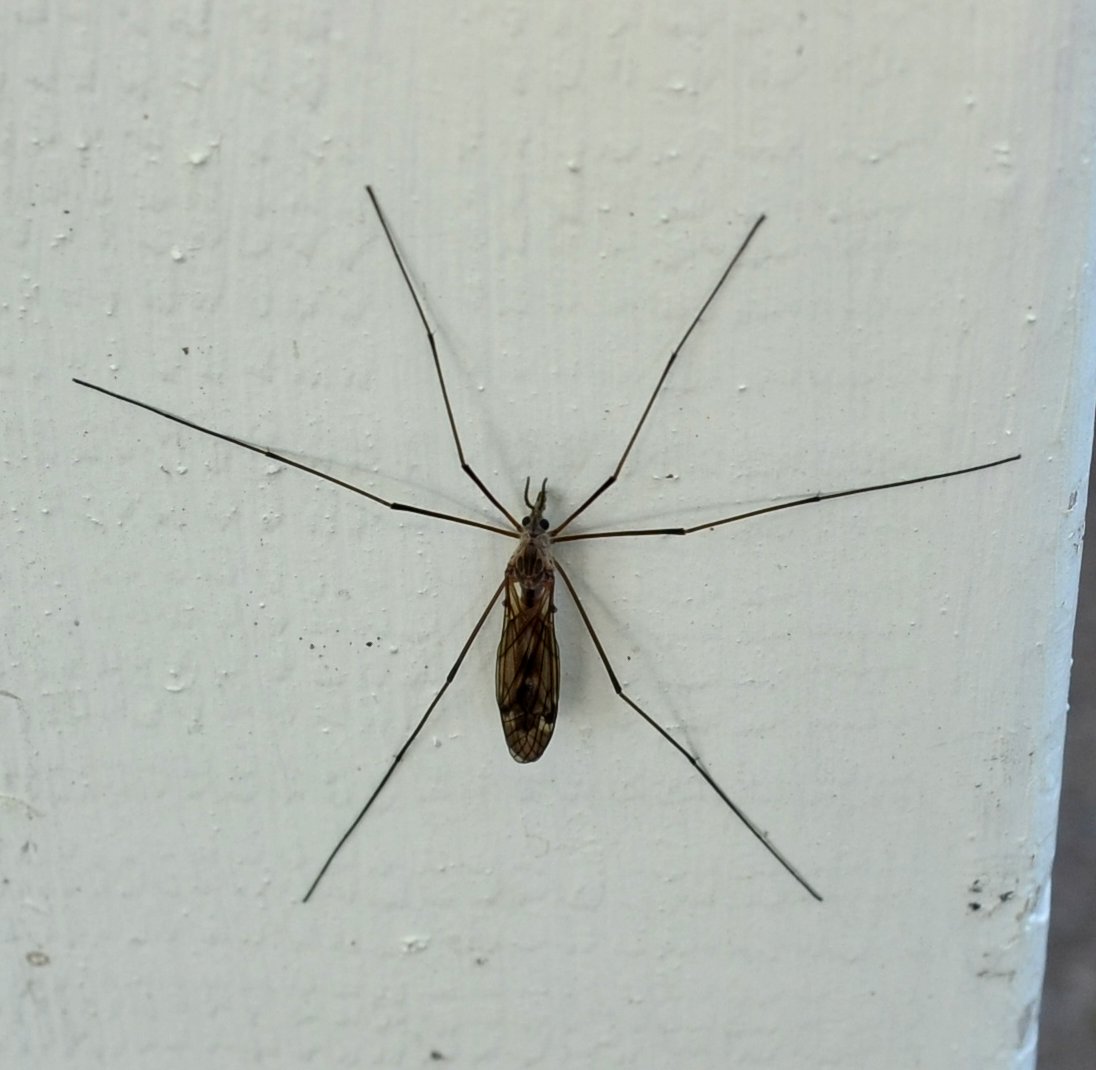
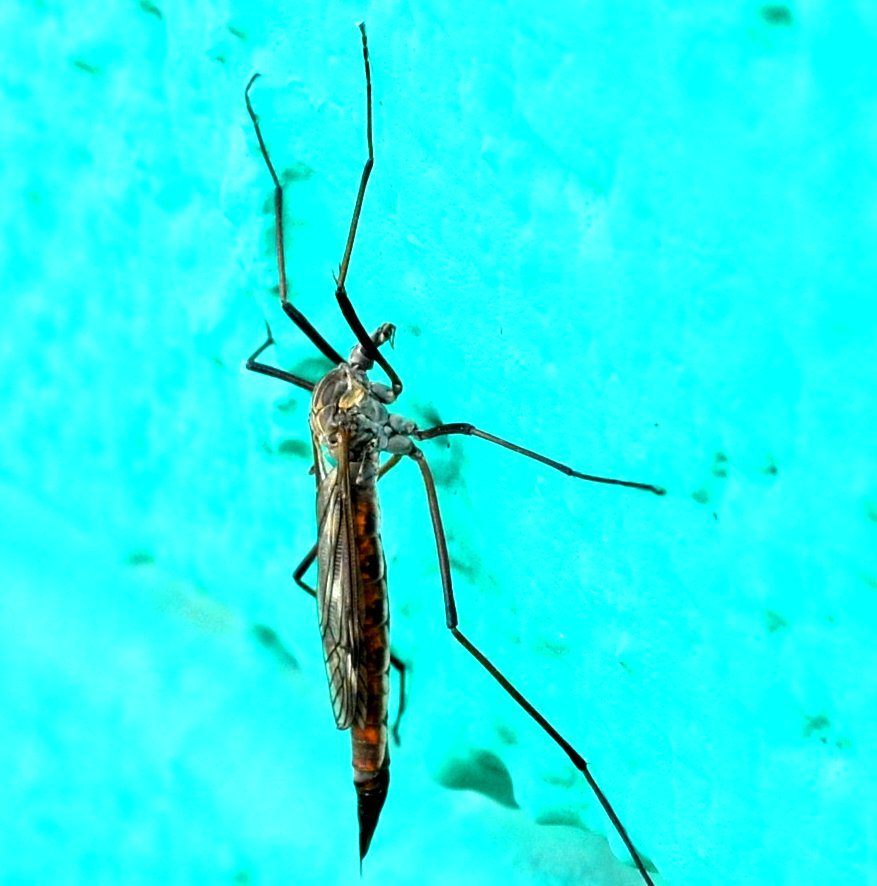
Here are some of our old friends, the gall midges and fungus gnats. The wood gnats have wider wings than the others, but I don't see enough difference not to call this another fungus gnat.
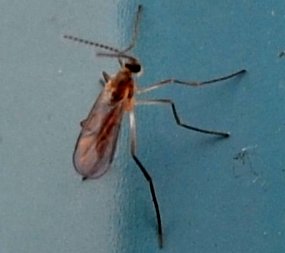
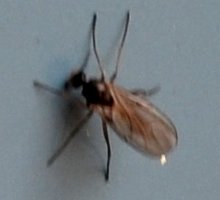
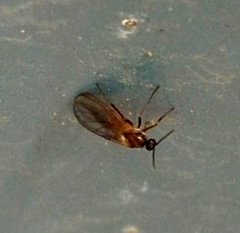
Here are some tiny flies. I believe this first one is a marsh fly (not to confuse with the march flies, who are also out just before April is over.) The others are mysteries so far.
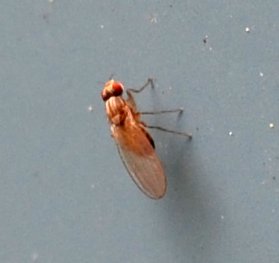
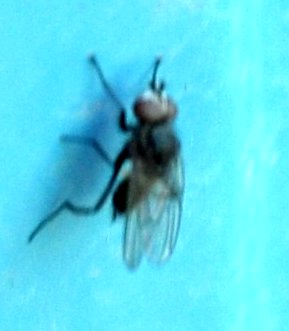
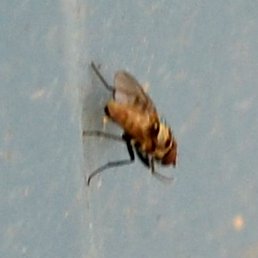
More flowers! I need a flower fix! Hey re's the purple hellebore finally turning its flowers outward a bit, probably to get pollinated.

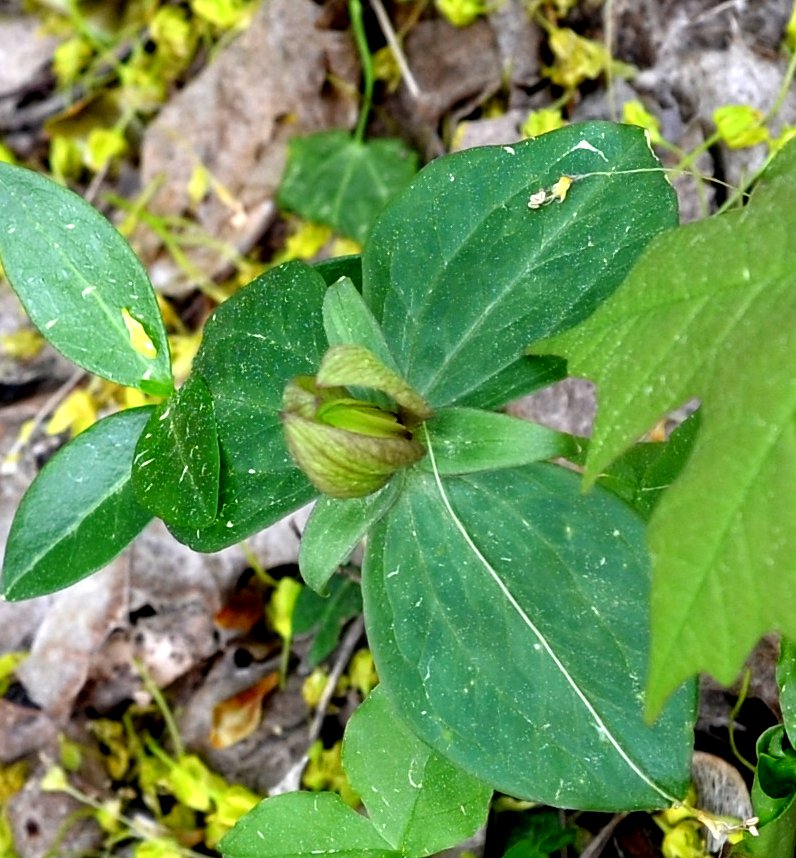

Here's the corner of the tulip bed.

Let's go back to the flies. Several kinds of mosquitoes have visited this week. When this blog came out on Sunday, I was fairly sure that I had spotted the Asian Tiger Mosquito This first one is probably the Inland Floodwater Mosquito, Aedes vexans. Guess what "vexans" means in Latin. We get several species in this genus during the summer. The one that's next is the problematic one. It looked to me a lot like the Asian Tiger Mosquito, Aedes albopictus. Its close relative, the Egyptian Aedes Mosquito is the one most nearly associated with the yellow fever virus as a vector, and more recently as a vector for the Zika virus. But now Aedes albopictus is also carrying Zika in the south and in such countries as Niger, and as it gets warmer and warmer we can expect Zika to survive in the Midwest too. It turns out that (I have this from Andrea Kautz, Research Entomologist at the Carnegie Museum of Natural History) in about 2000, The Aedes genus split into two genera: Aedes and Ochlerotatus. What I photographed was now more likely to be Ochlerotatus japonicus, the Asian Rock Pool Mosquito, which is known from MI. So just clear this mistake from your pretty little minds. It's a jungle out there! In fact, I'm still not sure that I can tell the difference without a score card!
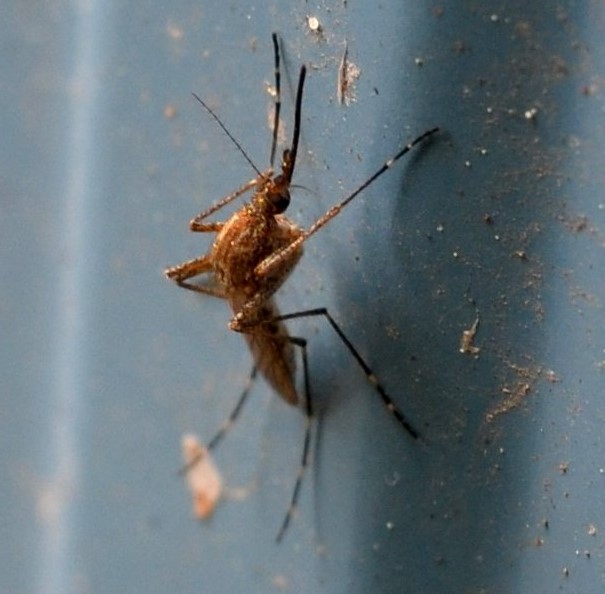
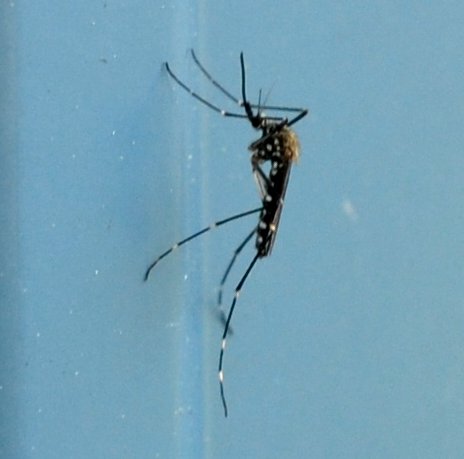
Since I've already opened a big can of worries, remember last week when I showed you what is and isn't a Brown Recluse Spider. Well, when I was at Park's this morning, Terry handed me a copy of the B1 page from the Jackson Cit Pat, and right in the middle of the page was a picture of the Brown Recluse Spider, which is now capable of passing the winter live in an unheated garage in Davison, Genessee County. Aren't you glad you asked? Not to panic, these spiders don't want to move in with you, that's why they're called "recluse". Just look for a light-colored violin on an otherwise brown spider, don't mess with it, and report it if you see one. And look at more pretty flowers.
There are a lot more interesting flies than those stupid mosquitoes and spiders. 99.999999999999% of them are not them. Let's look at the March Flies I was mentioning. The other day, I found a big female sitting on the eastern shop wall and a cute little male on the northern/southern corner. The third female was on the ground (actually on a nice green leaf.) You'll notice that all three of these flies have red/orange femurs (think of the femur on your own leg) and black thorax, which pushes them into the species Bibio femoratus. I think they are quite regal, especially by the flowing gown worn by the female on the leaf.
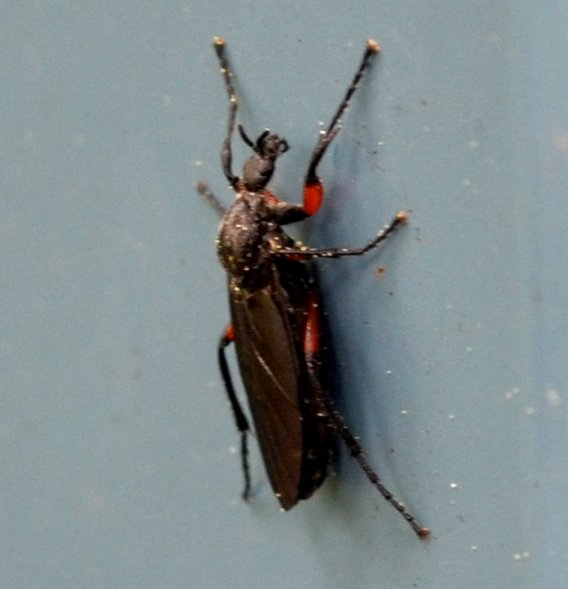
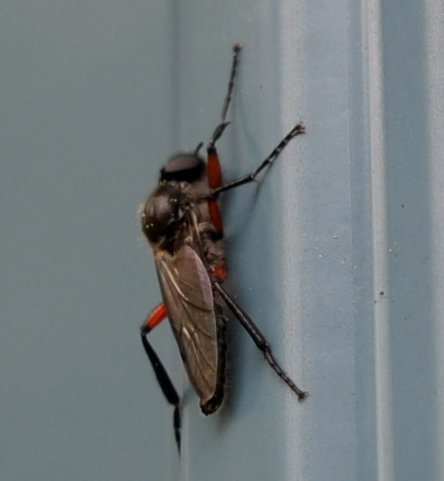
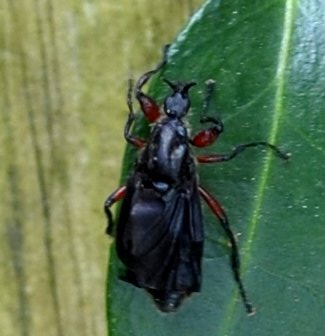
Remember the hoverflies? You think you are watching a bee, and suddenly the "bee" stands still in the air. It's not a bee, it's a hoverfly! This first one, Heliophilus fasciatus, we caught laying eggs in the pond last year. Maybe I already told you, its babies will live in the pond eating dead leaves and other decaying matter. Then I saw another one on the forget-me-nots. It took me a moment to remember that it wasn't H. fascoatus., but Eristalis transversa and a female to boot. In E. transversa, the males and the females have different patterns of black and gold. The third fly on this row looks like a fuzzy moth, but it isn't! It's a moth fly, which means it looks like a moth, but is actually a fly!
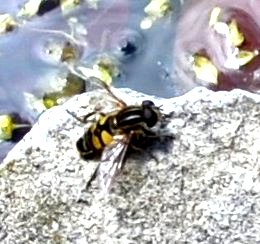

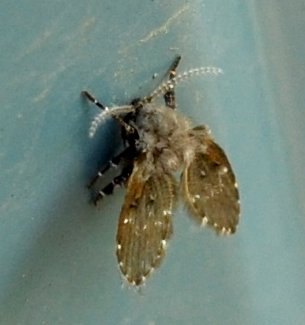
Here's what is probably a flesh-eating fly, another kind of sanitation worker. In the right light, its eyes burn red. Second is a more familiar view of its big red eyes.
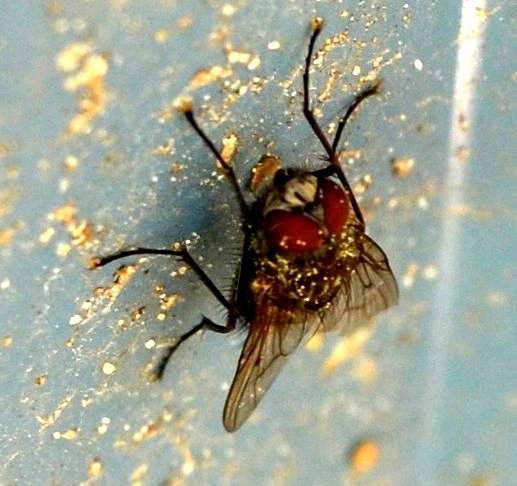

Let's move on to the spiders. All spring I've been following a few tiny spiderlings as they grow up to be surprising adults. You can't count on their patterns staying put. Here is one of several tiny black spiderlings who must have hatched very closely before I saw them dispersing. Second is one of the tiny common house spiders or possibly Pirate spiders who has grown and gotten yellower than before. Third is an orange and black spiderling but you can't get much pattern out of it because of the reflection on its abdoman.
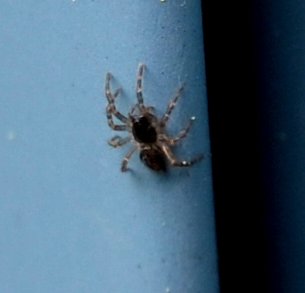

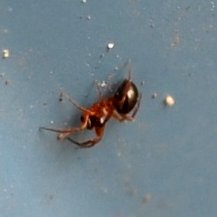
This first one I was helped by a friend in Inaturalist.org to see as the baby of the Orchard Orbweaver. Second is more of a top view. The third picture is borrowed from last summer's rendering of the exquisite adult.
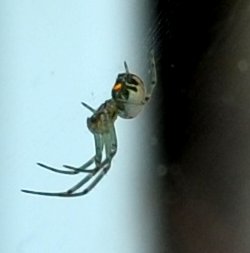
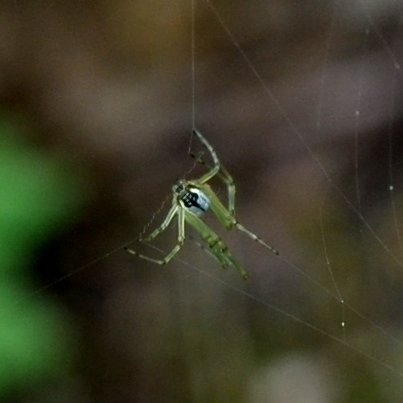

We had a couple of visits from jumping spiders. This first one is probably of genus Hentzia. The second is of Pelegrina (the pilgrimess) proterva. If you look at it right, it resembles a smiling baby face. Third is a picture from last May showing the baby face.
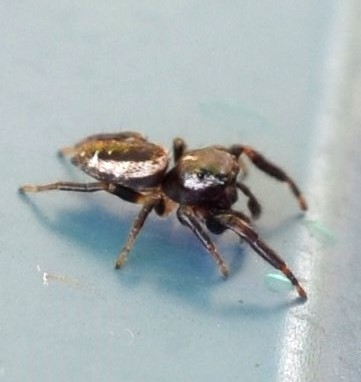
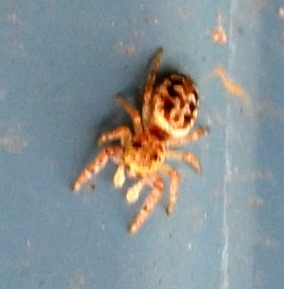

Here is a visitor who made the ideal portrait character. The second one also sat very still and let me portraitize it. It is a Hammock spider, which I saw for the first time last year. And this guy who looks like a ghost spider was sitting on the wall by the bathroom mirror.

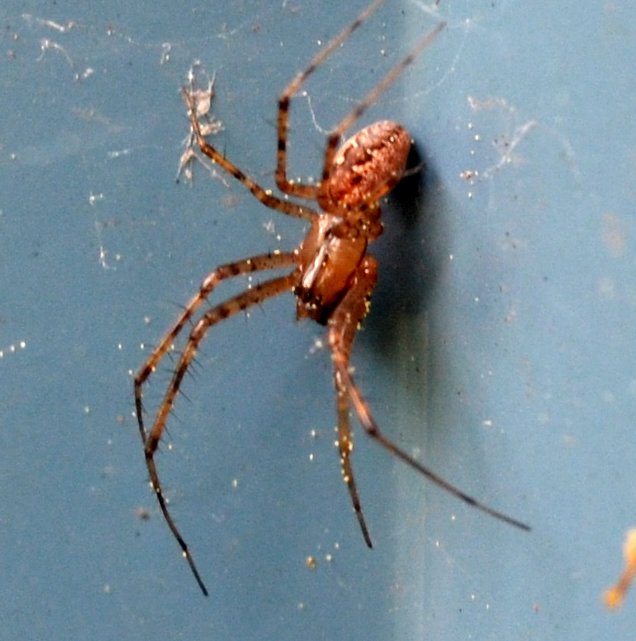
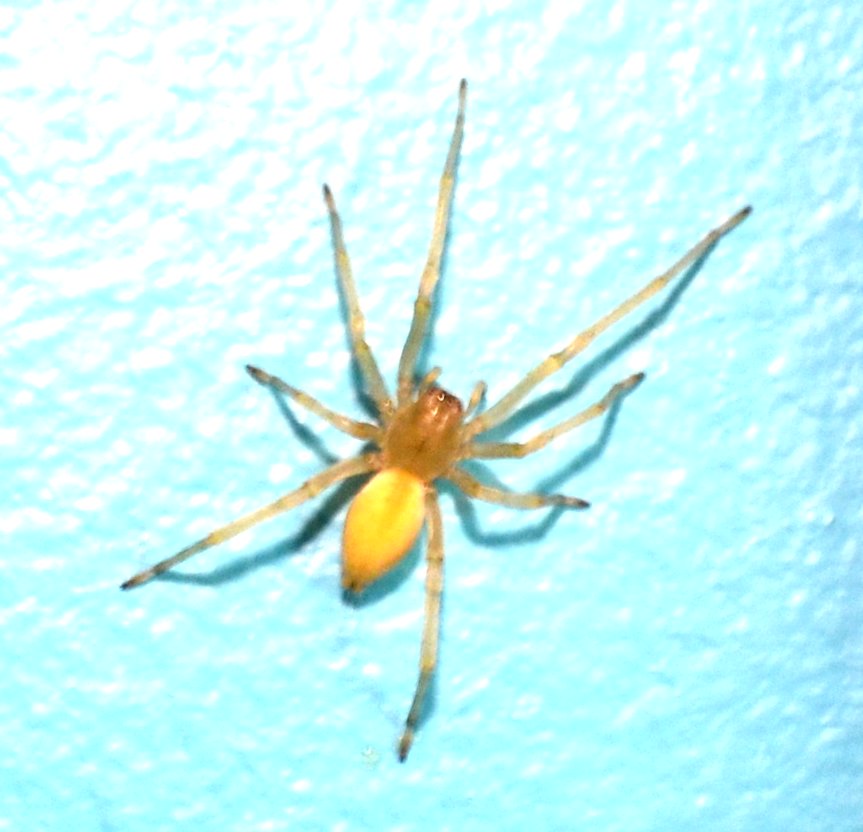
A few days ago, it was quite warm. In the evening I heard an American toad trilling, and happened to see two toads in there. Then it got cold, the trilling stopped, and I decided not to get the netting back out. At about 10 o'clock it was obvious that I would go down in my pj's and haul out the chicken wire. It took me quite a few tries to get it into approximate position. The worst was that the action-activated shop light turned off every few minutes, and so I had to hobble back to the door several times before everything was in place. In the morning the two toads grumpily disappeared. Now I'm leaving the netting in place and just folding it back in the daytime or until I hear the call of toads eager to get to the pond on time.
So folks, I'll leave you with some more pretty flowers.

Keep wishing the toadlets good cheer as they help to populate the neighbor with tiny toads in a month or two...
Love, Martha